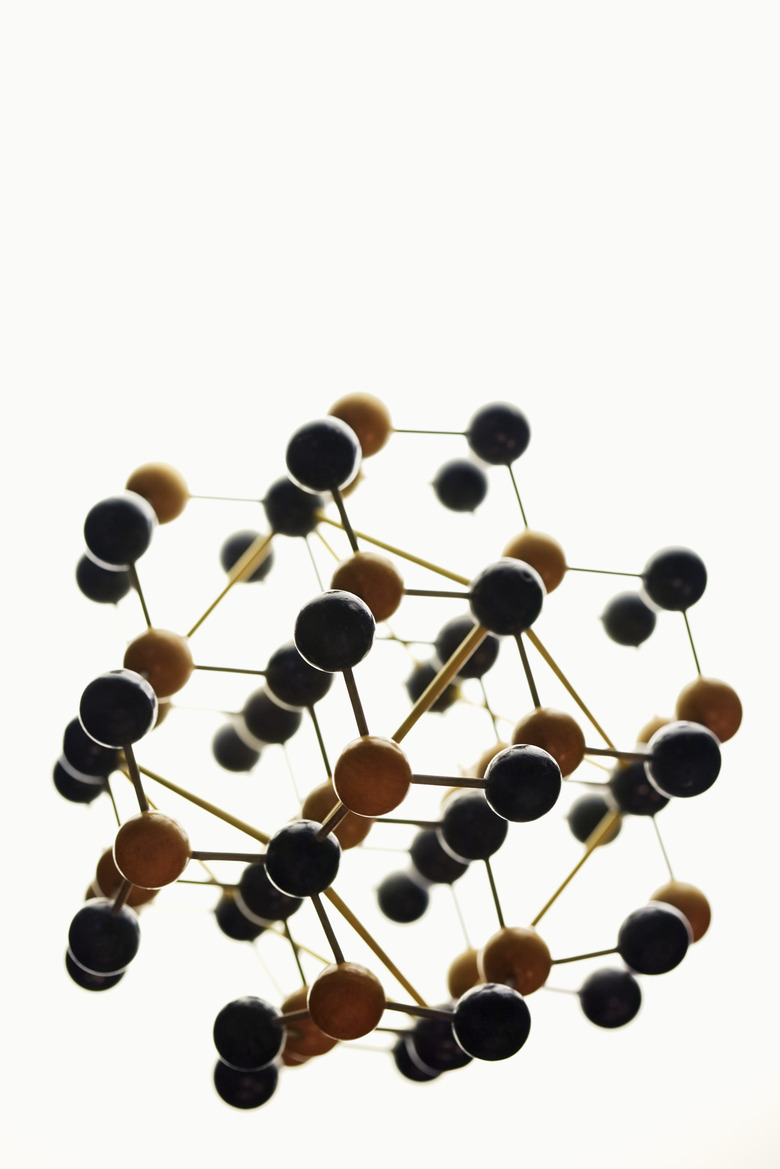Five Characteristics Of A Chemical Change
You put on your laboratory goggles and ready your pen to make observations but then stop: Is what you are seeing a physical change or a chemical change? It can be tricky to tell the difference between the two. Knowing some key indicators of a chemical change can be helpful both in the chemistry lab and in the real world.
TL;DR (Too Long; Didn't Read)
Some signs that a chemical change occurred include temperature increase, spontaneous change in color after mixing compounds, a marked odor after the reaction begins, formation of a precipitate in the solution and release of bubbles.
Physical Change or Chemical Change?
Physical Change or Chemical Change?
One way to think about physical changes is that they are reversible since they do not affect a substance's chemical identity. These include changes in size, shape, texture or state. A good example of physical change is ice melting into water. This change of state is a physical change since scooping up the water and returning it to the freezer reverses it. Chemical changes, on the other hand, can't reverse since they involve breaking bonds between molecules and forming new bonds.
Changes in Temperature
Changes in Temperature
While you can heat any substance, the spontaneous release of heat after mixing compounds together is a good indicator that a chemical reaction has taken place. Reactions that release heat are also called exothermic reactions. An example of a chemical change that releases heat is the thermite reaction, which is what causes fireworks to explode.
Changes in Color
Changes in Color
A spontaneous color change is another a good clue that a chemical change has occurred. For example, products made of iron can develop rust, turning them from grey to reddish brown in color. This color change happens without human intervention as part of a chemical change called an oxidation reaction.
A Marked Odor
A Marked Odor
Any noticeable odor that occurs after a reaction begins (as opposed to the odors normally present for each compound) is a sign of a chemical reaction. For instance, a rotten egg gets its terrible smell from the irreversible decomposition reaction that occurs as it spoils.
Formation of a Precipitate
Formation of a Precipitate
Sometimes when a chemical change occurs in a solution, a solid forms in that solution. This solid is a precipitate and is one of the most obvious ways to witness a chemical change since it can be very dramatic. A common household example is the appearance of soap scum, which is actually a precipitate that forms when minerals in hard water react with soap molecules.
Release of Bubbles
Release of Bubbles
Bubbling that occurs during a reaction is an excellent sign that a chemical change is happening. Anyone who has made a volcano model erupt using vinegar and baking soda has seen this chemical change in action. The bubbles of carbon dioxide produced by mixing these common ingredients are actually the result of two reactions: an acid-base reaction followed by a decomposition reaction.
While telling the difference between a physical change and a chemical change can seem tricky at first, knowing the signs that indicate a chemical reaction has taken place can make this important scientific concept much more straightforward.
Cite This Article
MLA
Mayer, Melissa. "Five Characteristics Of A Chemical Change" sciencing.com, https://www.sciencing.com/five-characteristics-chemical-change-10039816/. 27 April 2018.
APA
Mayer, Melissa. (2018, April 27). Five Characteristics Of A Chemical Change. sciencing.com. Retrieved from https://www.sciencing.com/five-characteristics-chemical-change-10039816/
Chicago
Mayer, Melissa. Five Characteristics Of A Chemical Change last modified August 30, 2022. https://www.sciencing.com/five-characteristics-chemical-change-10039816/
